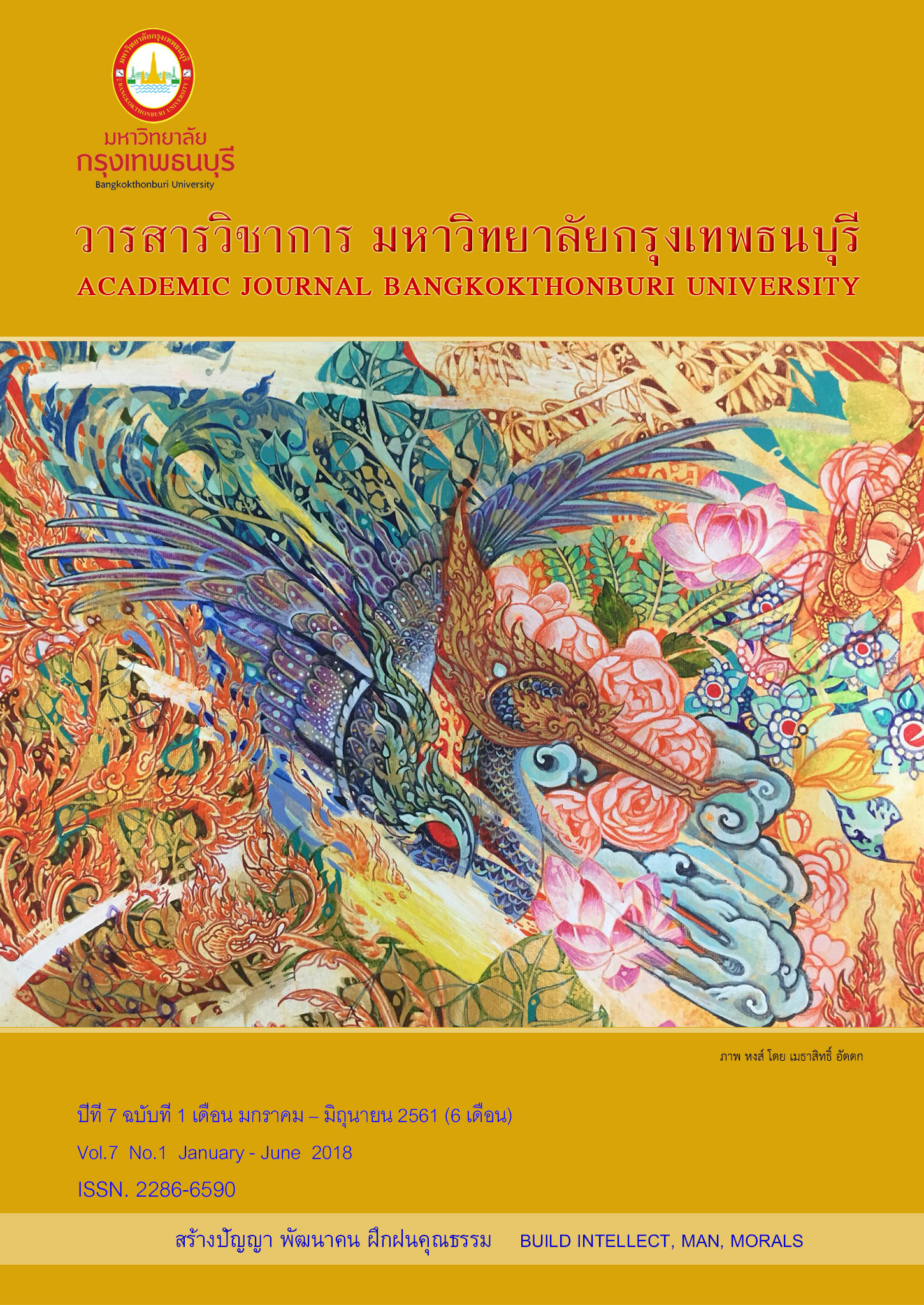A Model of Employees’ Creative Thinking and Innovation Behavior in Thai Business Organization
Main Article Content
Abstract
ABSTRACT
Assessing and modelling the capacity of employees for creative thinking and innovation behavior can be an important tool in determining the survival and the success of a company. Such sustainable businesses, are fundamental to the overall economic growth of the country and are measured by their ability to compete on the global stage. The purpose of this study aimed to 1) to analyze the level of employee creative thinking and innovation in various organizations in Thailand and determine the factors influencing this behavior; 2) to analysis the underlying relationships between the measured variables and 3) to empirically construct models testing the validity of the measurement of employee creative and innovative behaviors. The population used in this study was selected using a random sampling method from 448 employees in 210 companies who received the award of outstanding enterprises honoring labor relations and labor welfare from The Department of Labor Protection and Welfare, Minister of Labor in year 2559.Likert scale questionnaires were deployed and the analysis of data was carried out using Descriptive statistic and Structural Equation Modeling (SEM).
The research found that; 1) these employees in Thailand’s organizations have a high level of creative and innovative behavior; 2) the internal environmental of the organization is highly influential on the commitment of talented employees to the organization and this in turn has an indirect influence on the creative and innovative behaviors of the employees; 3) talented employees found both direct and indirect influences on creative and innovative behaviors; 4) a hypothesized model of employees’ creative thinking and innovation behavior was found to be consistent in accordance with the empirical data. Based on these findings we provides some recommendations as following: 1) Thai business organizations should prioritize the development of their employees creative thinking and innovative capacity and manage the organizational environment to foster a commitment to retain talented employees; 2) the organizations should have a broad policy of acquiring new technology and knowledge, recruiting talented people and fostering partnerships from both business sectors and major institutions with the support of government.
23


